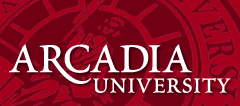Loading...
Date of Award
Spring 2025
Degree Name
Master of Medical Science (Physician Assistant)
Department
Physician Assistant; College of Health Sciences
First Advisor
Timothy Besse, MSPAS, MAT, PA-C
Abstract
Hypertrophic cardiomyopathy (HCM) is a cardiac condition characterized by excessive thickness of the left ventricular wall and septum. A diagnosis of HCM is life-changing and the consequences of a missed diagnosis are life-threatening. HCM is the most common cause of sudden cardiac death in those under the age of 30. The prevalence of HCM is 1 in 500 in the general population based on echocardiographic studies. However, it is estimated that only 1 in 1,395 people in the United States have a clinical diagnosis of HCM based on diagnosis codes. Undiagnosed HCM is a risk to patient safety and early detection is key to management, thus healthcare providers must be well-versed in the signs, symptoms, and process of diagnosis. Additionally, about half of cases of HCM are caused by known genetic mutations and inherited in an autosomal dominant pattern, so providers must be able to counsel patients and families as to their risks. Finally, it is important to remain educated on best practice guidelines for HCM management, particularly with the inclusion of the novel drug mavacamten.
Recommended Citation
Sherfey, Kayla, "Hypertrophic Cardiomyopathy: Current Diagnosis and Management" (2025). Capstone Showcase. 12.
https://scholarworks.arcadia.edu/showcase/2025/pa/12
Hypertrophic Cardiomyopathy: Current Diagnosis and Management
Hypertrophic cardiomyopathy (HCM) is a cardiac condition characterized by excessive thickness of the left ventricular wall and septum. A diagnosis of HCM is life-changing and the consequences of a missed diagnosis are life-threatening. HCM is the most common cause of sudden cardiac death in those under the age of 30. The prevalence of HCM is 1 in 500 in the general population based on echocardiographic studies. However, it is estimated that only 1 in 1,395 people in the United States have a clinical diagnosis of HCM based on diagnosis codes. Undiagnosed HCM is a risk to patient safety and early detection is key to management, thus healthcare providers must be well-versed in the signs, symptoms, and process of diagnosis. Additionally, about half of cases of HCM are caused by known genetic mutations and inherited in an autosomal dominant pattern, so providers must be able to counsel patients and families as to their risks. Finally, it is important to remain educated on best practice guidelines for HCM management, particularly with the inclusion of the novel drug mavacamten.
